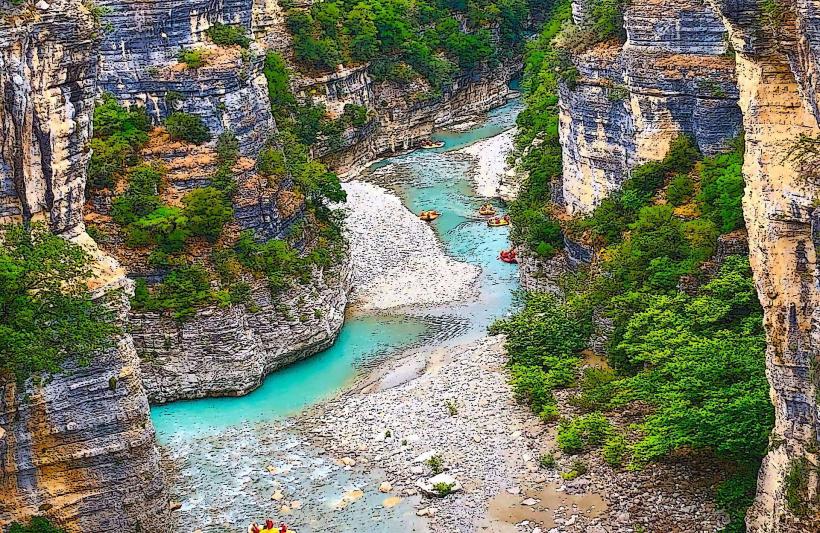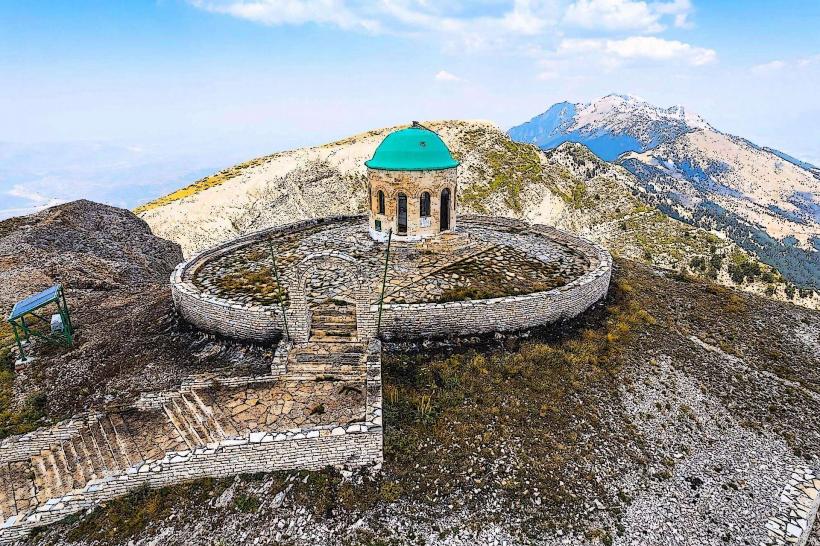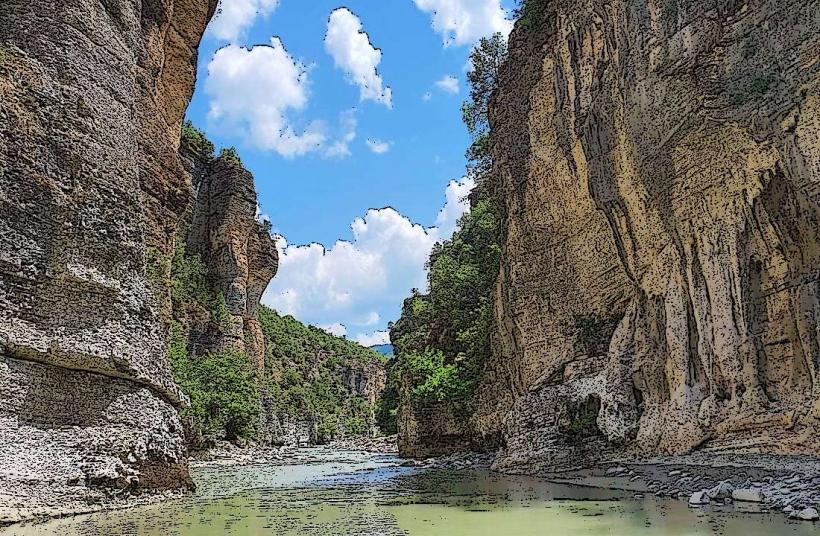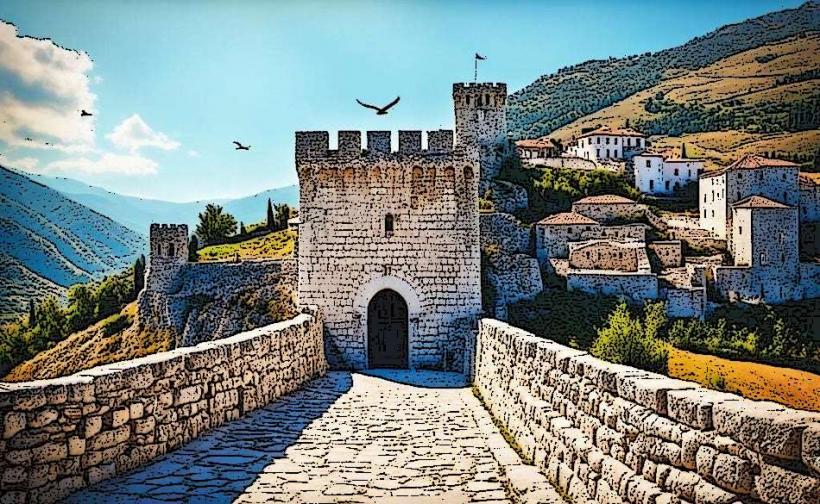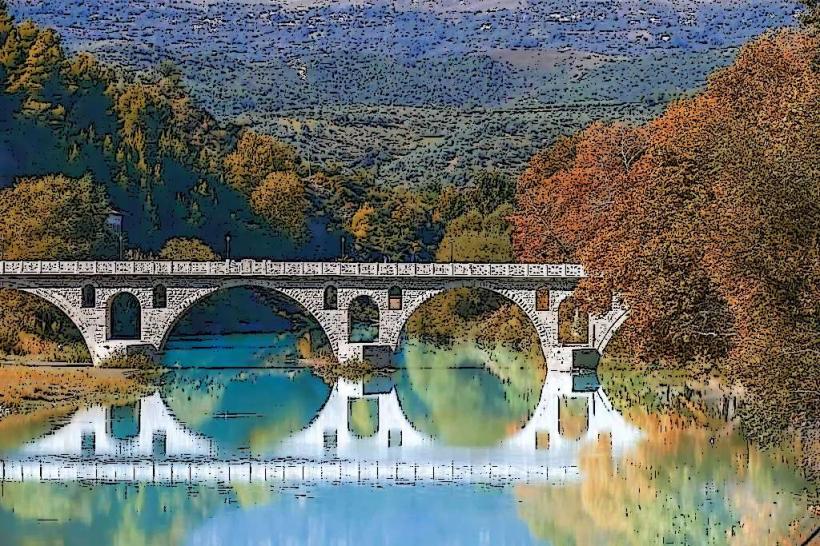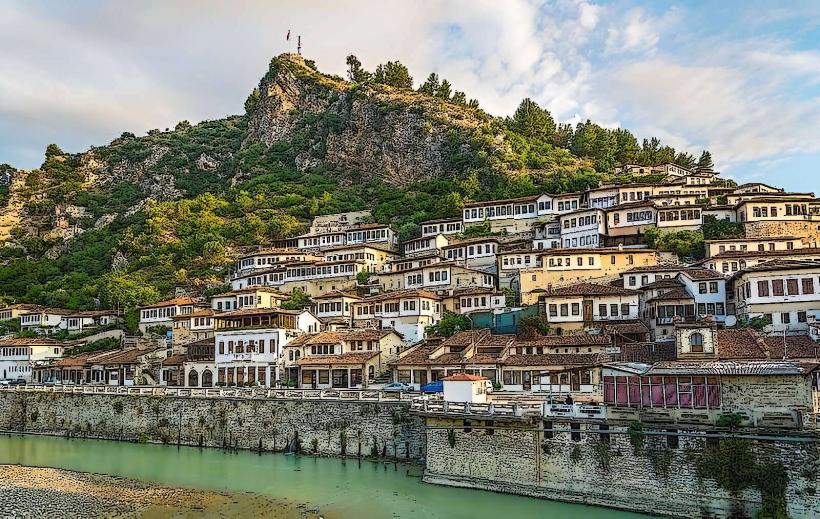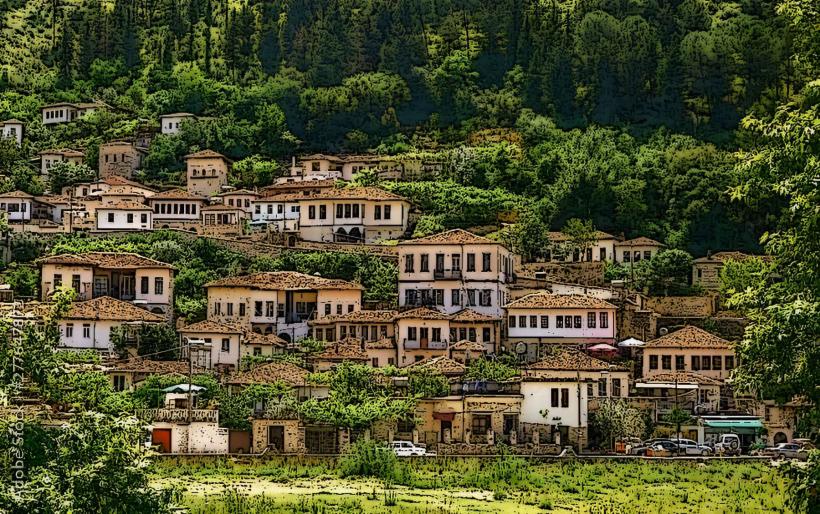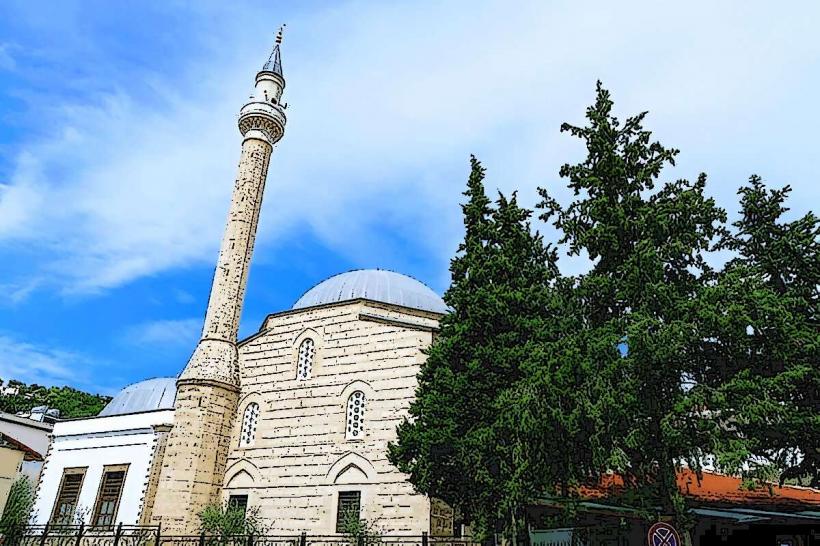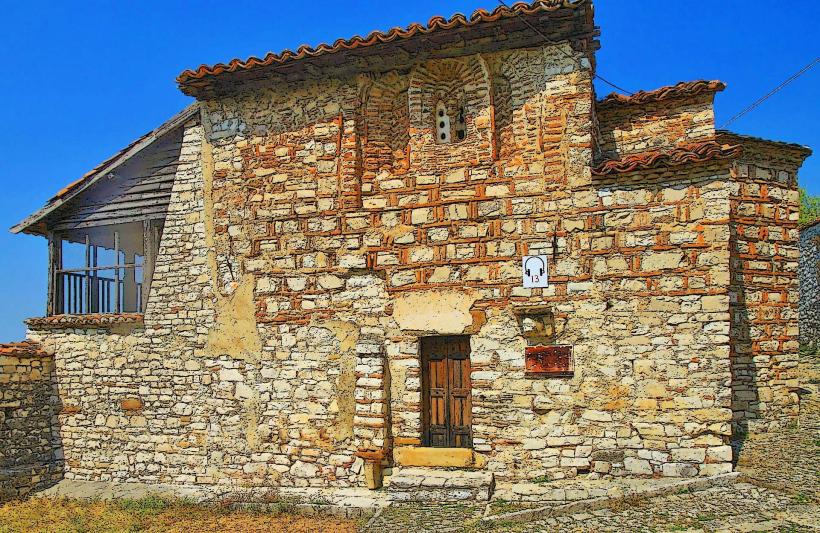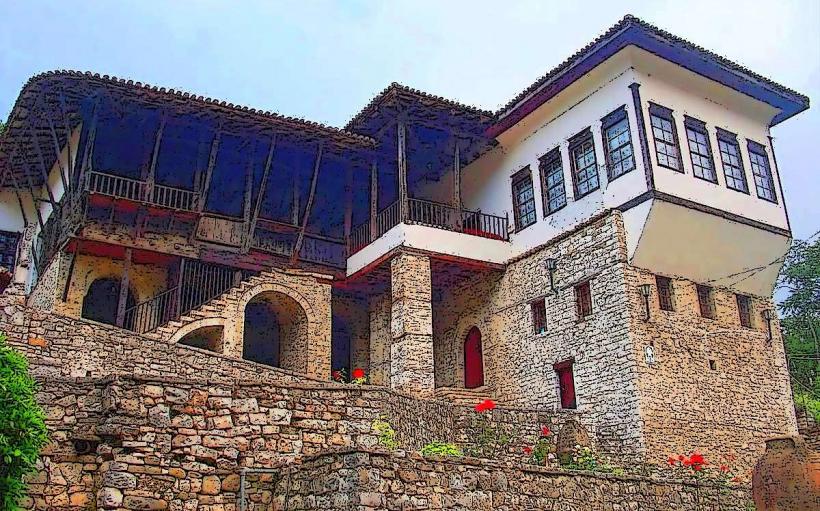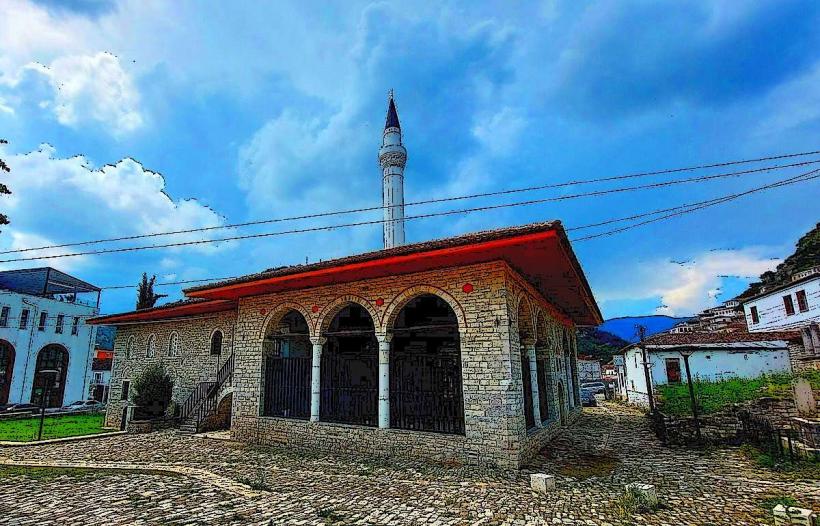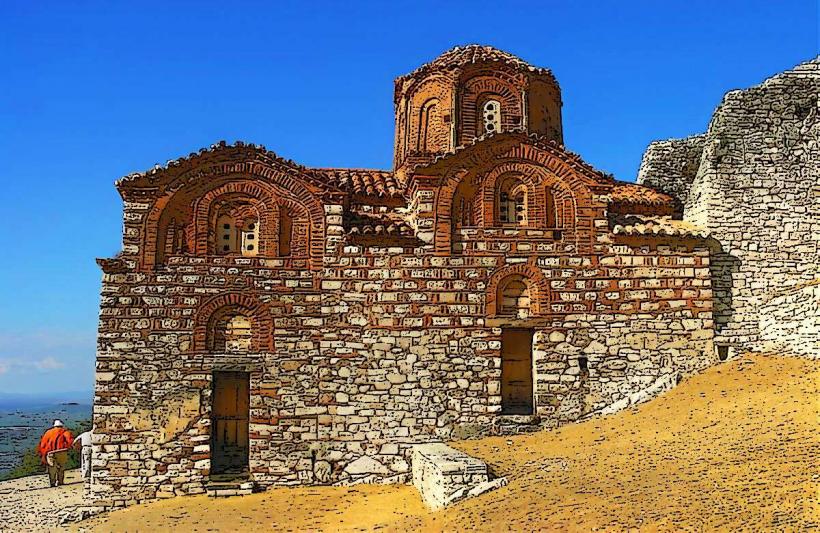Information
Landmark: Onufri National MuseumCity: Berat
Country: Albania
Continent: Europe
The Onufri National Museum is one of Albania's most significant cultural institutions, located in the city of Berat. The museum is dedicated to the life and work of Onufri, a renowned Albanian iconographer and one of the most important figures in the history of Albanian religious art. The museum houses a collection of Byzantine-style religious icons, which represent a key part of Albania's religious and cultural heritage. It is part of the Berat Castle, and its setting within the historic walls of the castle adds to the experience of exploring the rich cultural history of Berat.
History and Background
Who was Onufri?
- Onufri (circa 1500–1600) was an influential Albanian iconographer during the 16th century. He is considered one of the leading figures of the Byzantine Renaissance, and his work has had a lasting impact on the development of religious iconography in the region.
- Onufri is renowned for his distinct style, which combined traditional Byzantine elements with a more personalized approach, giving his icons a unique and expressive character. His works are found in many churches and monasteries throughout Albania, especially in the southern regions.
The Onufri Museum
- The museum was established to honor Onufri’s contributions to religious art and to showcase the extraordinary collection of icons he created. It is located within the Church of the Holy Trinity, a Byzantine-style church within the Berat Castle. The church is a fitting venue for the museum, as it mirrors the style and period of Onufri’s work.
- The Onufri National Museum was founded in 1986, and its collection has grown to include icons, religious artifacts, and examples of Albanian iconography from the 14th century to the 19th century.
Museum Collections
Icons by Onufri
- The most important part of the museum’s collection is the icons painted by Onufri himself. These include some of his most famous works, such as “The Last Supper”, “The Crucifixion”, and “The Virgin and Child”. These icons are notable for their vibrant colors, rich detail, and emotive expressions, reflecting the influence of both Byzantine and local traditions.
- Onufri’s icons often feature dramatic uses of light and shadow, combined with gold leaf and vivid colors, creating a striking and powerful visual impact. His iconography emphasizes spiritual intensity, with figures portrayed in a stylized, almost otherworldly manner.
Other Religious Icons
- In addition to Onufri’s own works, the museum features a wide range of religious icons from different periods and regions of Albania. These include works by later iconographers who were influenced by Onufri’s distinctive style.
- The collection showcases the evolution of iconography in Albania, from its Byzantine origins to its adaptation under the Ottoman Empire, where Islamic and Christian artistic traditions often merged.
Wooden Sculptures and Frescoes
- Alongside icons, the museum also holds examples of wooden sculptures and frescoes, which were commonly used in the decoration of churches and monasteries during the same period. These artworks reflect the religious and cultural life of the time, portraying biblical scenes and figures in dynamic compositions.
Religious Artifacts
- The museum also displays religious objects, including chalices, crosses, and liturgical items used in the daily worship of the Albanian Orthodox Church. These objects offer insight into the spiritual practices of the period and the role of religion in the cultural identity of the region.
Architectural Setting
Church of the Holy Trinity
- The Onufri National Museum is housed in the Church of the Holy Trinity, a Byzantine-style church that dates back to the 19th century. The church itself is a significant architectural landmark, with beautiful frescoes and decorative elements that reflect the artistic traditions of the time.
- The church's setting within the walls of Berat Castle adds to its historical significance. The combination of the church's architecture, the castle's fortifications, and the museum's collection creates a unique environment where visitors can immerse themselves in both the religious and historical context of Berat.
The Museum's Atmosphere
- The museum is designed to create an atmosphere that highlights the spiritual and historical context of Onufri’s work. The dimly lit rooms, golden accents, and carefully arranged displays draw attention to the intricate details of the icons and religious artifacts.
- Visitors can explore the museum at their own pace, learning about the evolution of Albanian iconography, the life of Onufri, and the religious practices that shaped the culture of the time.
Visitor Experience
Educational and Cultural Insights
- The Onufri Museum offers a deep educational experience for visitors interested in the history of Albanian religious art. Guided tours are available, allowing visitors to gain a deeper understanding of the iconography, the historical context of the icons, and the significance of Onufri’s work in the development of Christian art in the Balkans.
- The museum is an important site for art lovers, history enthusiasts, and those interested in Byzantine and Ottoman art. It also serves as a cultural center, bringing together locals and tourists to appreciate Albania’s religious and artistic heritage.
Photography and Exploration
- The museum's collections are housed in an intimate and reflective space, where visitors are encouraged to take their time in observing the icons and artifacts. Photography is generally allowed, but visitors should check with the museum staff for any restrictions.
Practical Information
Location
- The Onufri National Museum is located inside the Berat Castle, in the city of Berat, Albania. It is situated in the Church of the Holy Trinity, which is within walking distance of the castle’s main entrance.
- Berat is easily accessible by road from Tirana (about 2.5 hours by car) and is a popular destination for tourists exploring Albania’s cultural heritage.
Opening Hours
- The museum is open daily, but hours may vary depending on the season and holidays. It is recommended to check the opening times before planning a visit. The museum is generally open during daylight hours, and guided tours can be arranged in advance.
Entry Fees
- The entry fee to the Onufri National Museum is typically modest, with a combination ticket available for those visiting both the museum and Berat Castle. The fee helps support the preservation and upkeep of the museum's collections and the church itself.
Conclusion
The Onufri National Museum is a must-visit destination for anyone interested in Albanian religious art and Byzantine iconography. Through its stunning collection of icons, frescoes, and religious artifacts, the museum offers visitors an intimate look at the life and work of one of the most important figures in Albanian art history. Located within the historic Berat Castle, the museum provides a unique opportunity to explore both the religious and architectural heritage of one of Albania's most historic cities. Whether you're an art lover, a history enthusiast, or simply interested in learning more about Albania’s rich cultural heritage, the Onufri National Museum is an essential stop on your journey through Berat.

